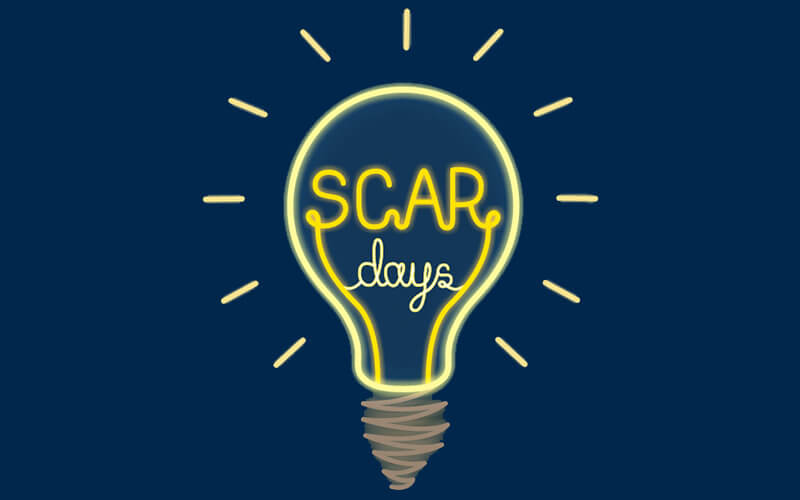
For their outstanding projects, Cal State Fullerton students across colleges and disciplines won awards for their Student Creative Activities and Research Days poster presentations.
The Office of Research and Sponsored Projects recently hosted the virtual Student Creative Activities and Research Days, which featured 59 poster presentations and a total of 97 undergraduate and graduate student presenters.
For the first time, student research and creative activities virtual poster presentations were available for viewing for nearly two weeks during late April through May 7, culminating with a virtual awards ceremony. More than 150 individuals logged in to view the posters, resulting in 2,278 presentation views and more than 1,000 comments.
“This was a unique opportunity for undergraduates and graduate students from all disciplines to come together to share their work, virtually,” said Terri Patchen, professor of elementary and bilingual education and faculty fellow for student creative activities and research.
Students from each of the eight colleges were presented with an award for their exceptional work. (see sidebar story)
Four students and a team of mathematics majors won outstanding poster presentation awards for their work on a range of topics. The prize-winning posters are:
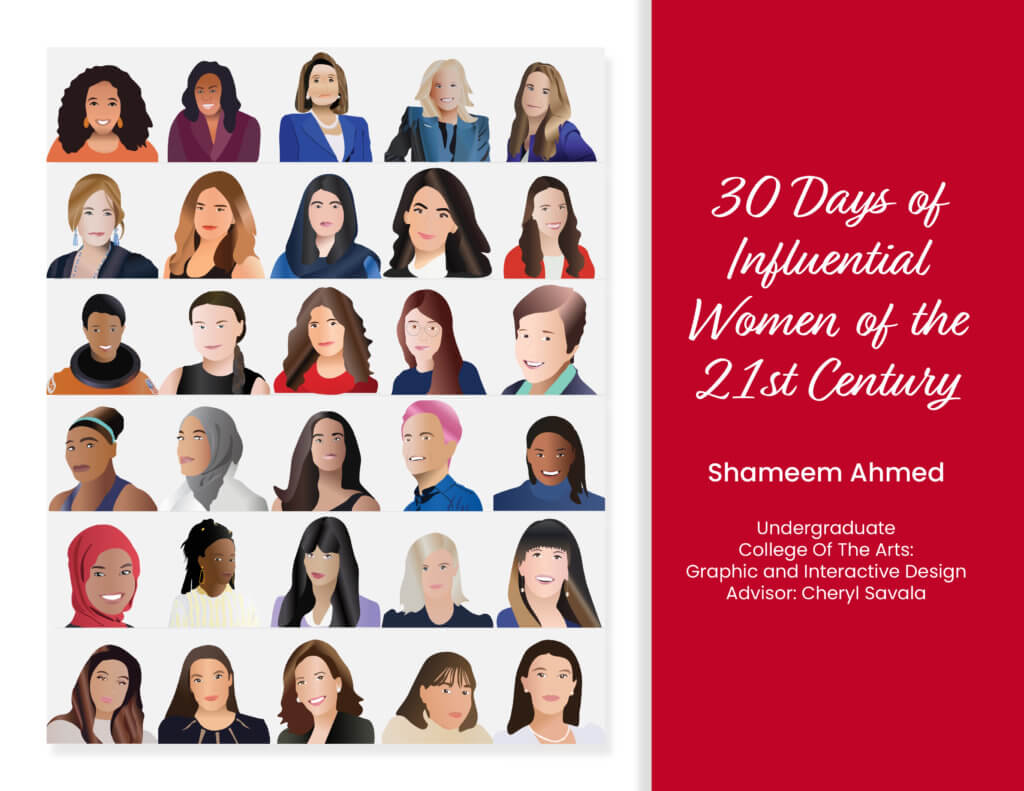
Shameem Ahmed, undergraduate, art-graphic and interactive design
Mentor: Cheryl Savala, lecturer in art

Ahmed, a graduating senior majoring in art-graphic and interactive design, created her illustration editorial project titled, “30 Days of Influential Women of the 21st Century,” as a tribute to women such as Amal Clooney, Ibtihaj Muhammad, Amanda Gorman, Sofia Scarlat and Alexandria Ocasio-Cortez.
The project, inspired by National Women’s History Month and International Women’s Day held in March, focuses on women who are doing ground-breaking work in fields such as international human rights law, athletics, government, art and gender equality.
“I chose these women because I wanted to learn more about their stories and how they are impacting our society today,” Ahmed said. “By learning about other women’s stories, I hope that this project will inspire future generations to pursue their dreams and passions.”
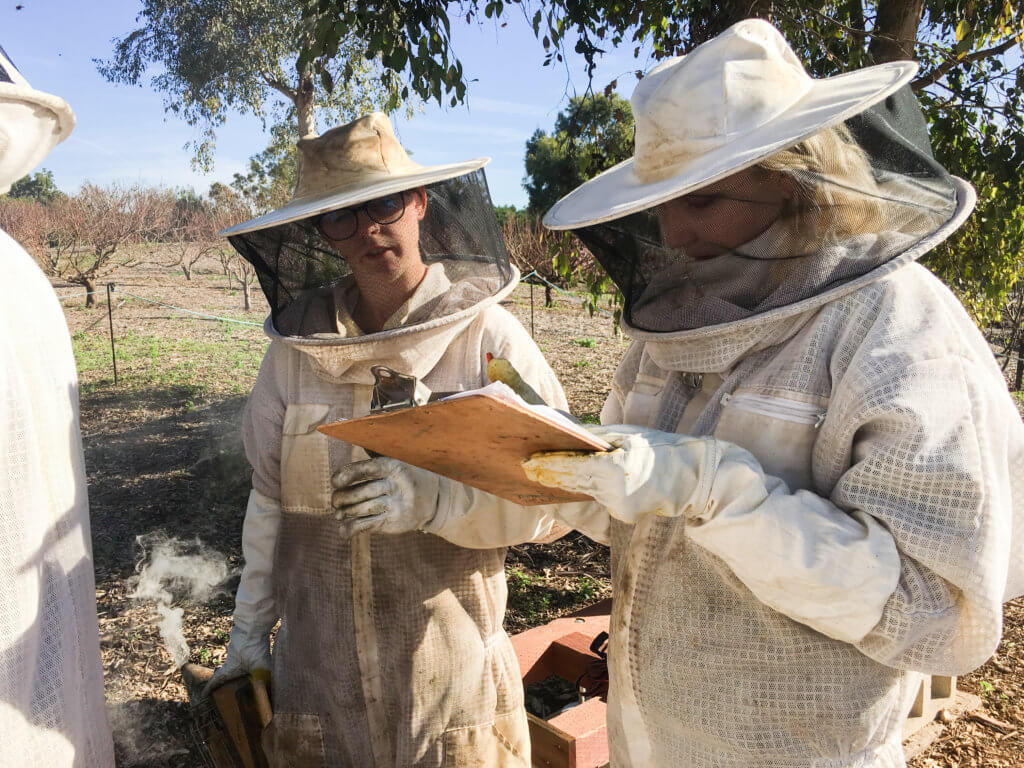
Cailin McLaughlin, graduate student, anthropology
Mentor: Sara Johnson, professor of anthropology
McLaughlin, Class of 2021, presented her research about environmental factors that can impact honeybee colonies.
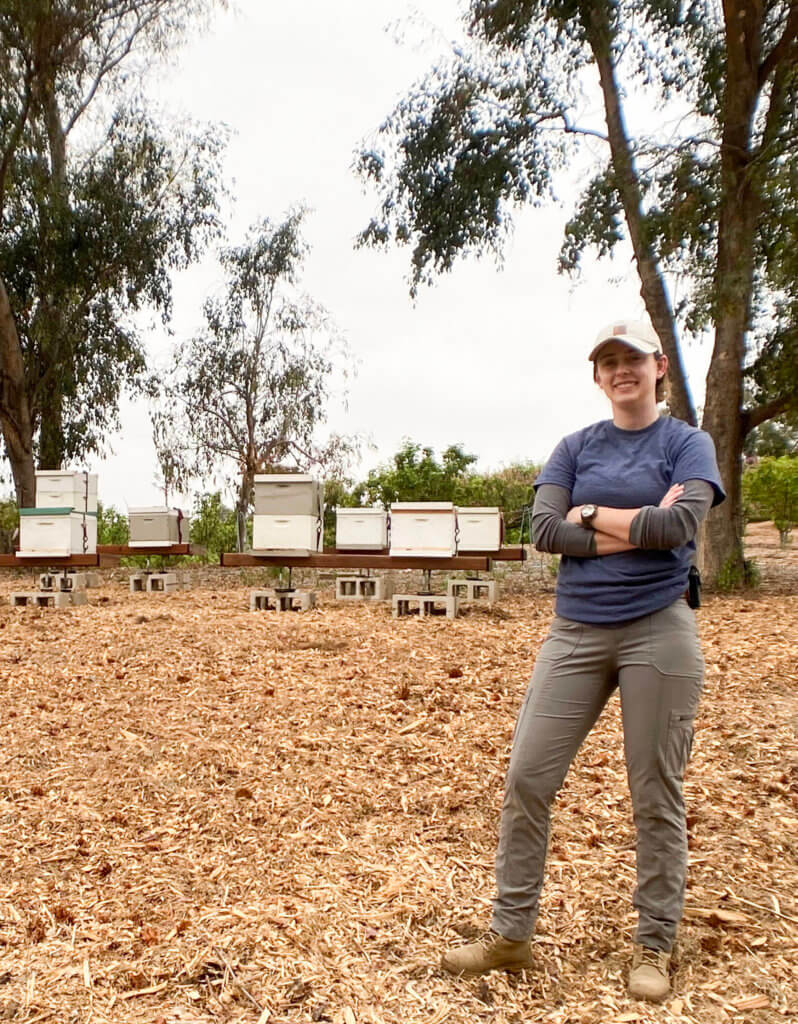
In her study, titled, “Life History Plasticity of Managed Honeybees; Behavioral Response to Environmental Conditions That Promote or Attenuate Varroa Destructor,” McLaughlin focused on varroa mites, which feed off honeybees and inject them with viruses.
Honeybees groom their nestmates to remove the mites, said McLaughlin, a graduate assistant in the Urban Agriculture Community-Based Research Experience (U-ACRE) project.
“Our results show that grooming behavior will increase based on higher humidity levels, and as time spent grooming increases, the number of varroa mites decreases. This research is important because honeybees are part of not only the ecosystem, but the U.S. agricultural sector.”
Delia Sanchez, graduate student, public health
Mentor: Portia Jackson Preston, assistant professor of public health
Sanchez’s study, “An Exploration of Mental Health Risk and Protective Factors Among Individuals Supporting Identity Groups at Universities,” focused on professionals working for centers on college campuses that support students who are at risk for trauma.

“We asked them to discuss challenges they face in their role, how they cope with these challenges, and what support they need to promote their own well-being. Without appropriate support, they are at risk of developing secondary traumatic stress (a PTSD-like disorder) or burnout, which can lead to poor health outcomes such as anxiety or depression,” said Sanchez, who is studying health promotion and disease prevention and graduates this month.
Mindful self-care practices, including engaging in physical activity, talking with colleagues and friends, and setting boundaries can help them cope, along with institutional resources, Sanchez added. She also created self-help materials that can be found here.
Zahra Tahmasebi, graduate student, psychology
Mentor: Douglas Navarick, professor of psychology
“Perceived Wrongness of Unintended Harm Caused by Distracted Driving” is the title of Tahmasebi’s research project, which examines moral judgement and decision-making.

“Moral judgment is a natural capacity that evolved as a tool to enhance social harmony, but it can also give rise to intense conflicts,” Tahmasebi said. “It is important to recognize the processes that underlie our moral judgment.”
Her ongoing study is measuring ratings of moral wrongness in a scenario about a driver who gets distracted and drives through an intersection against a red light, causing one of four levels of harm: disrupting traffic, collision, collision with injury or killing a pedestrian.
“Judgments of wrongness significantly increased with the severity of harm when the behavior itself was not grossly reprehensible,” she said.
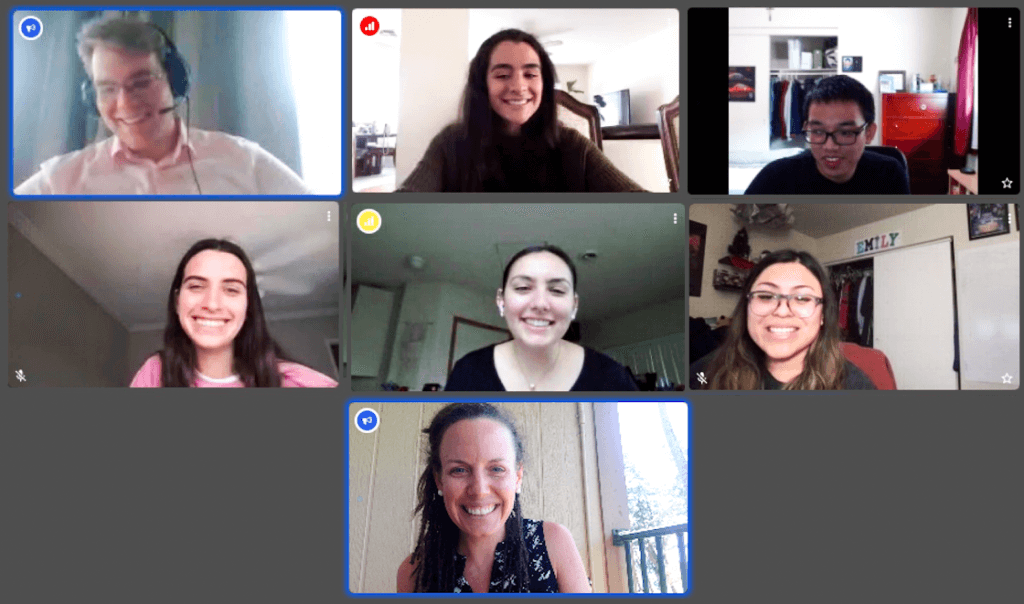
Christine Gamez, Brian Quisenberry and Anthony Truong, undergraduates, mathematics-teaching mathematics
Mentor: Alison Marzocchi, associate professor of mathematics
This team of mathematics majors, who are planning careers as high school teachers, researched the human presence in middle school mathematics textbooks used in a local school district.
Their work, titled “Representation of Women and STEM Careers in Middle School Mathematics Textbooks,” analyzed whether the books had sufficient gender representation with a specific eye towards gender representation in STEM (science, technology, engineering and mathematics) careers.
Their research did not find any examples of women or gender non-binary characters in STEM careers among the textbook exercises. This research is important because textbooks could be stifling efforts to diversify STEM professions, the team members said.
The student researchers encourage textbook authors to provide more examples of diverse professionals in STEM careers. In the meantime, teachers can modify existing exercises to be more inclusive.